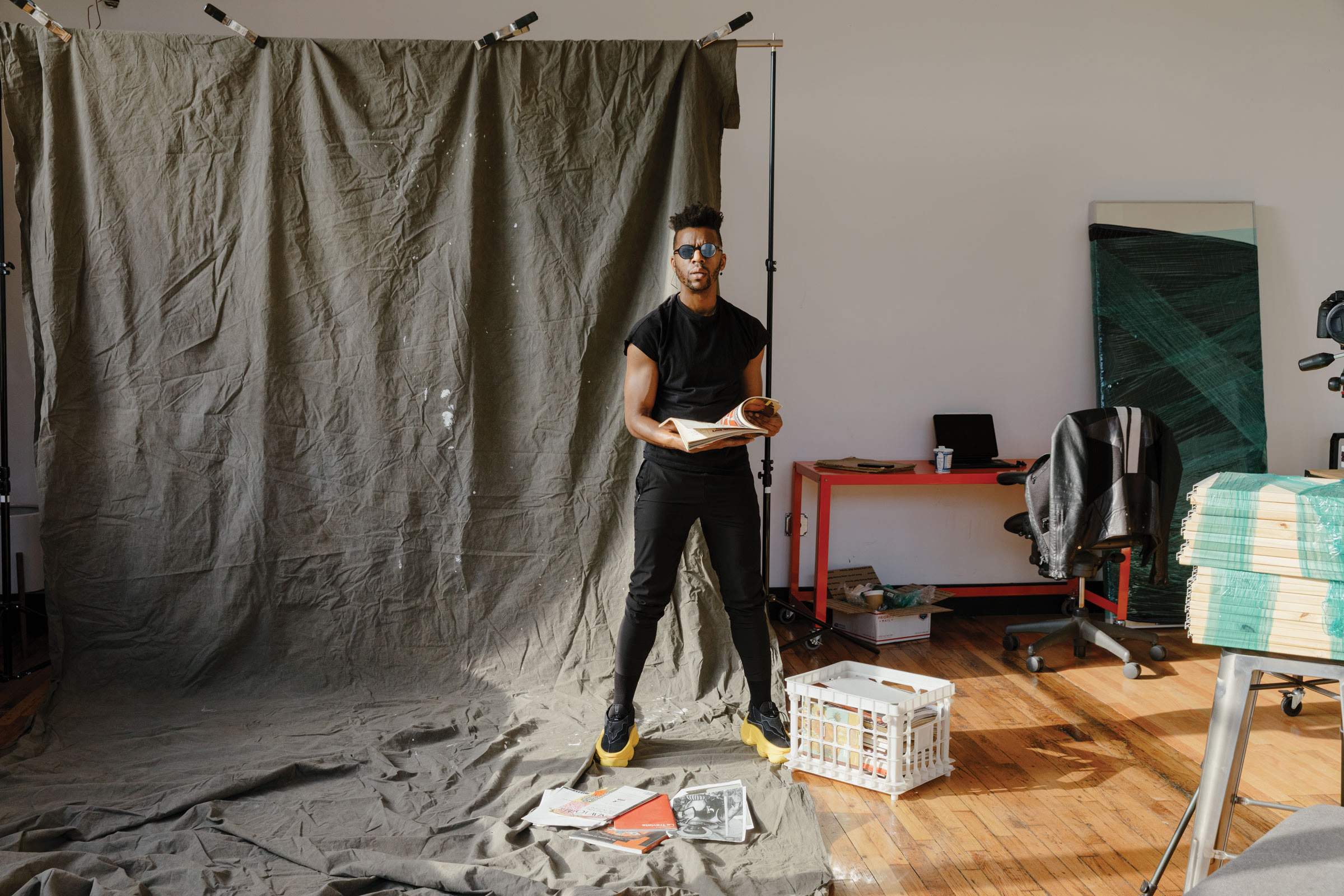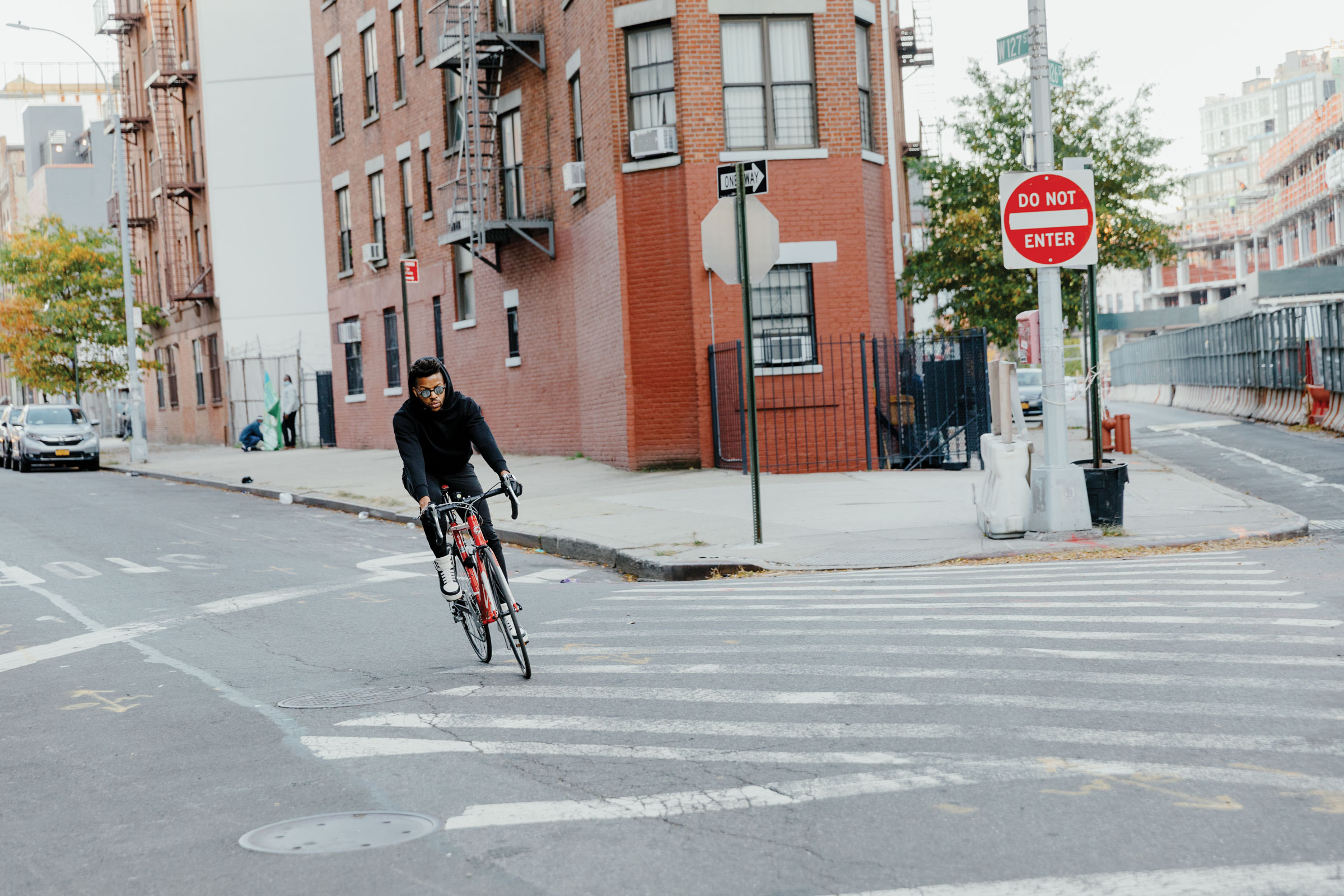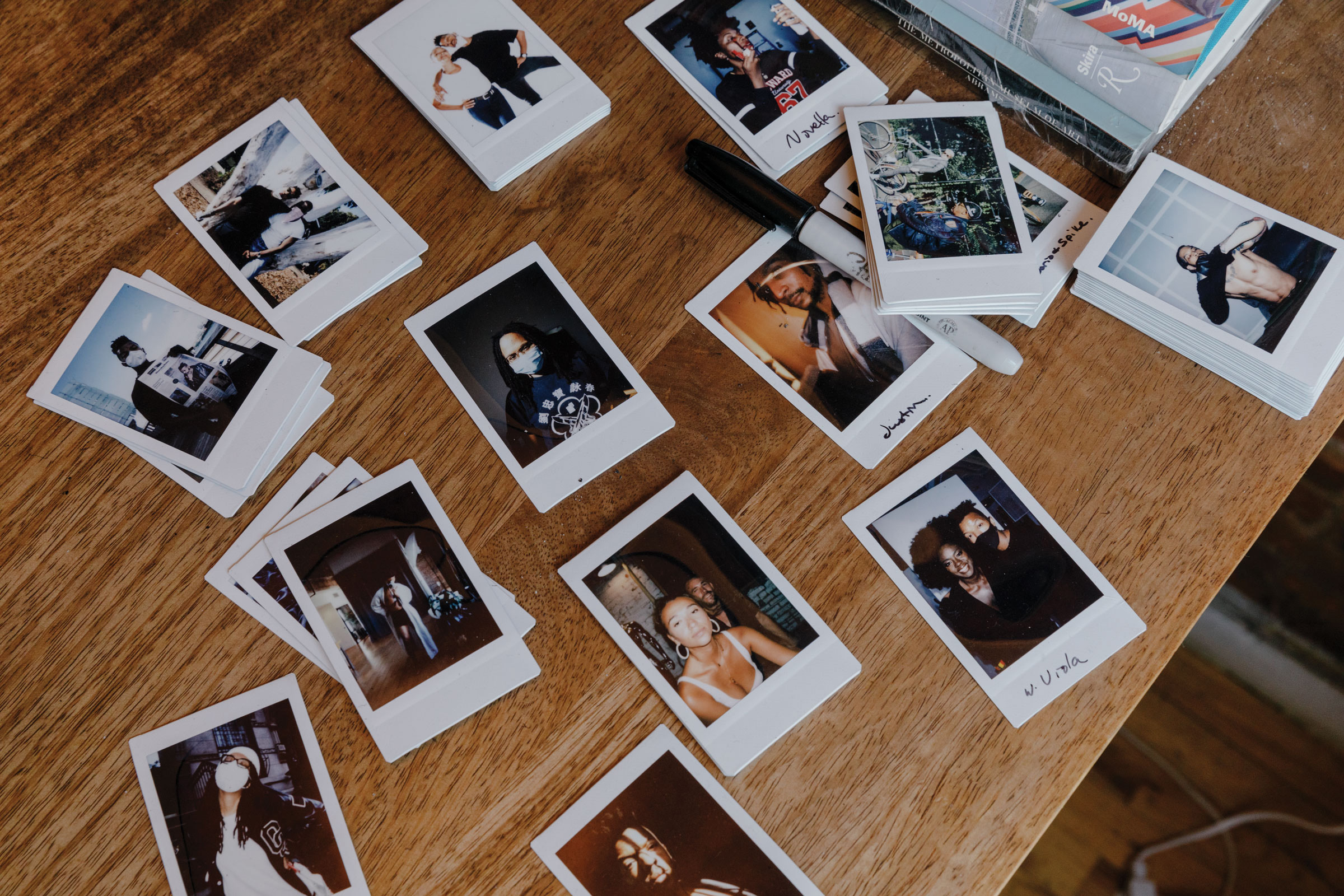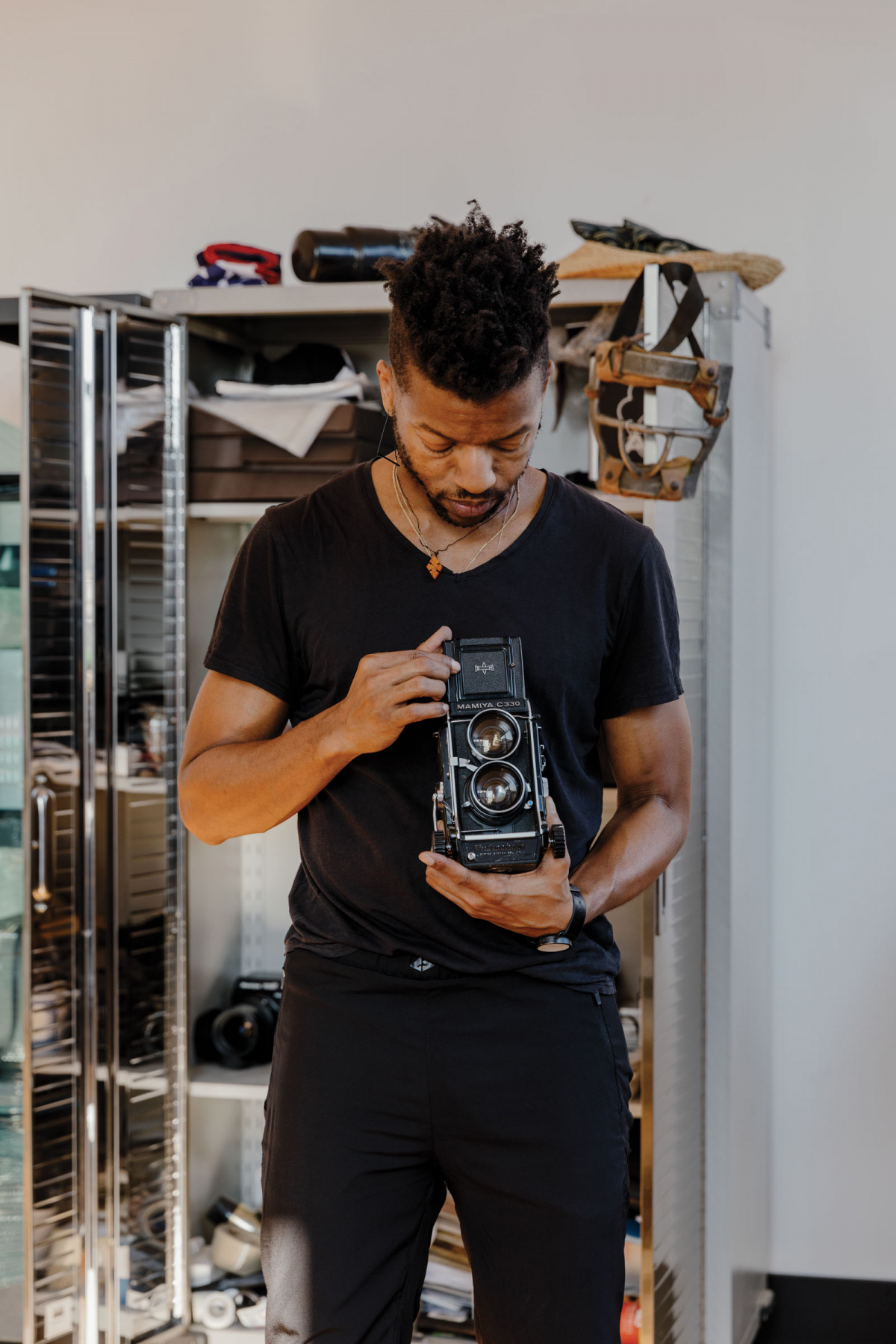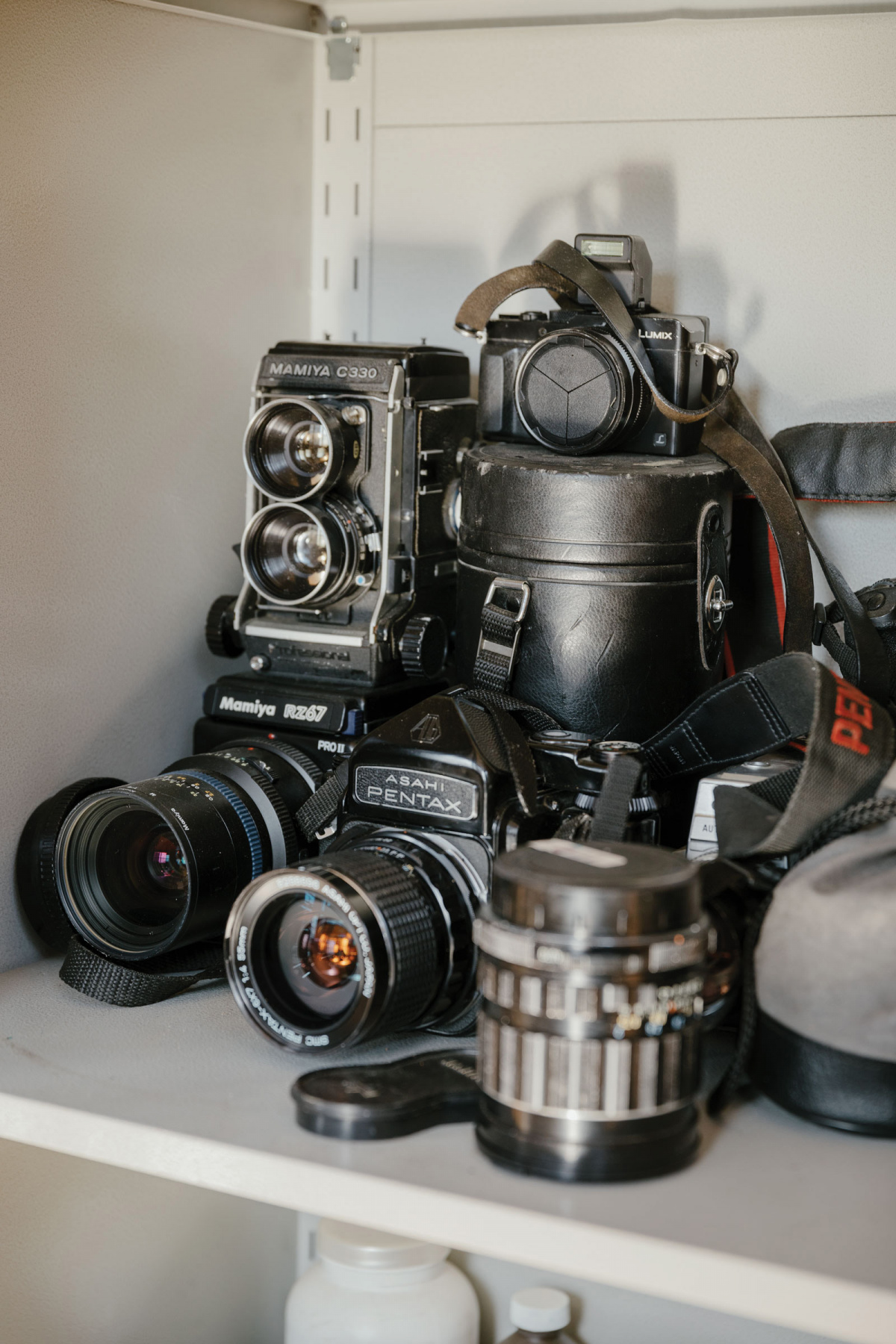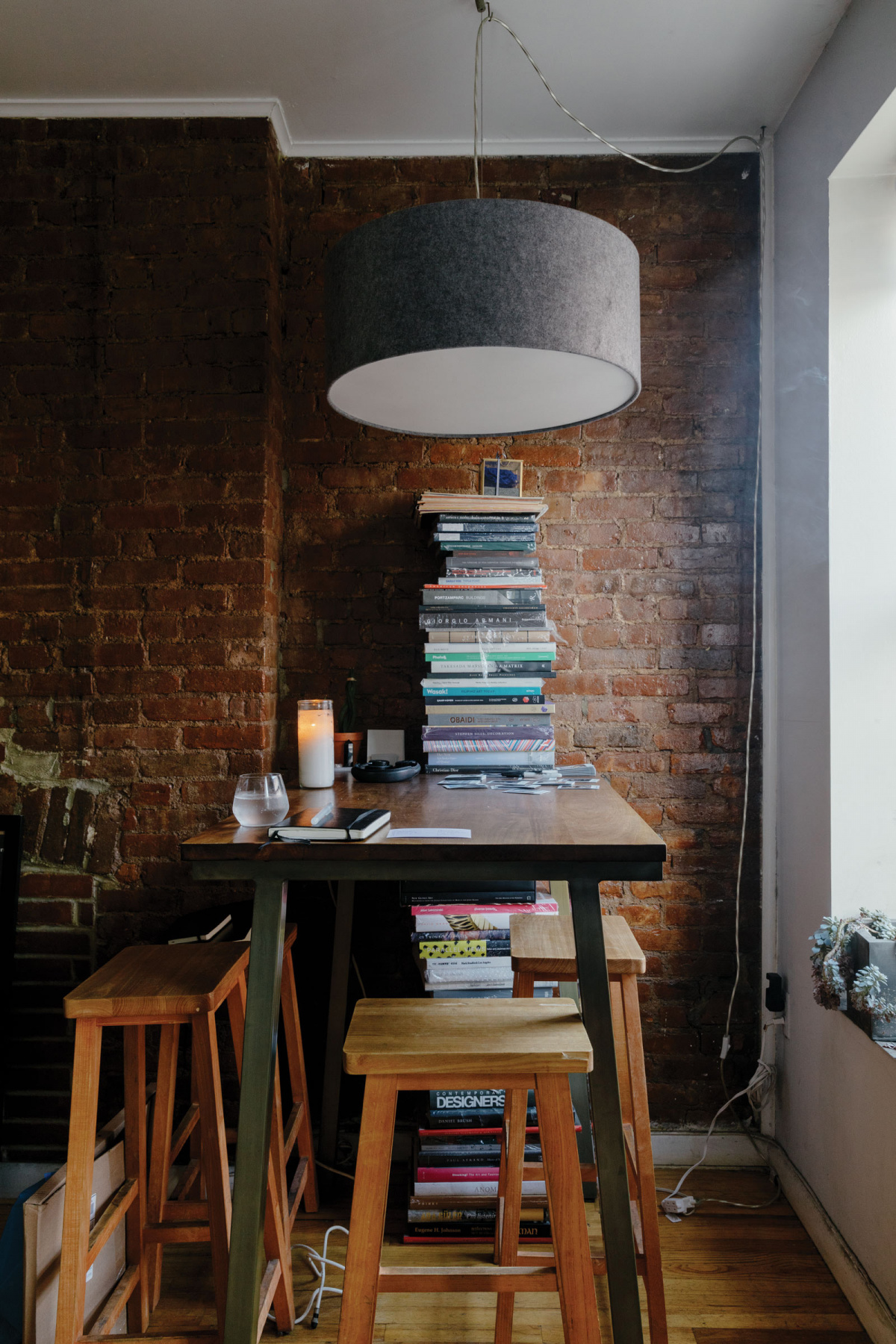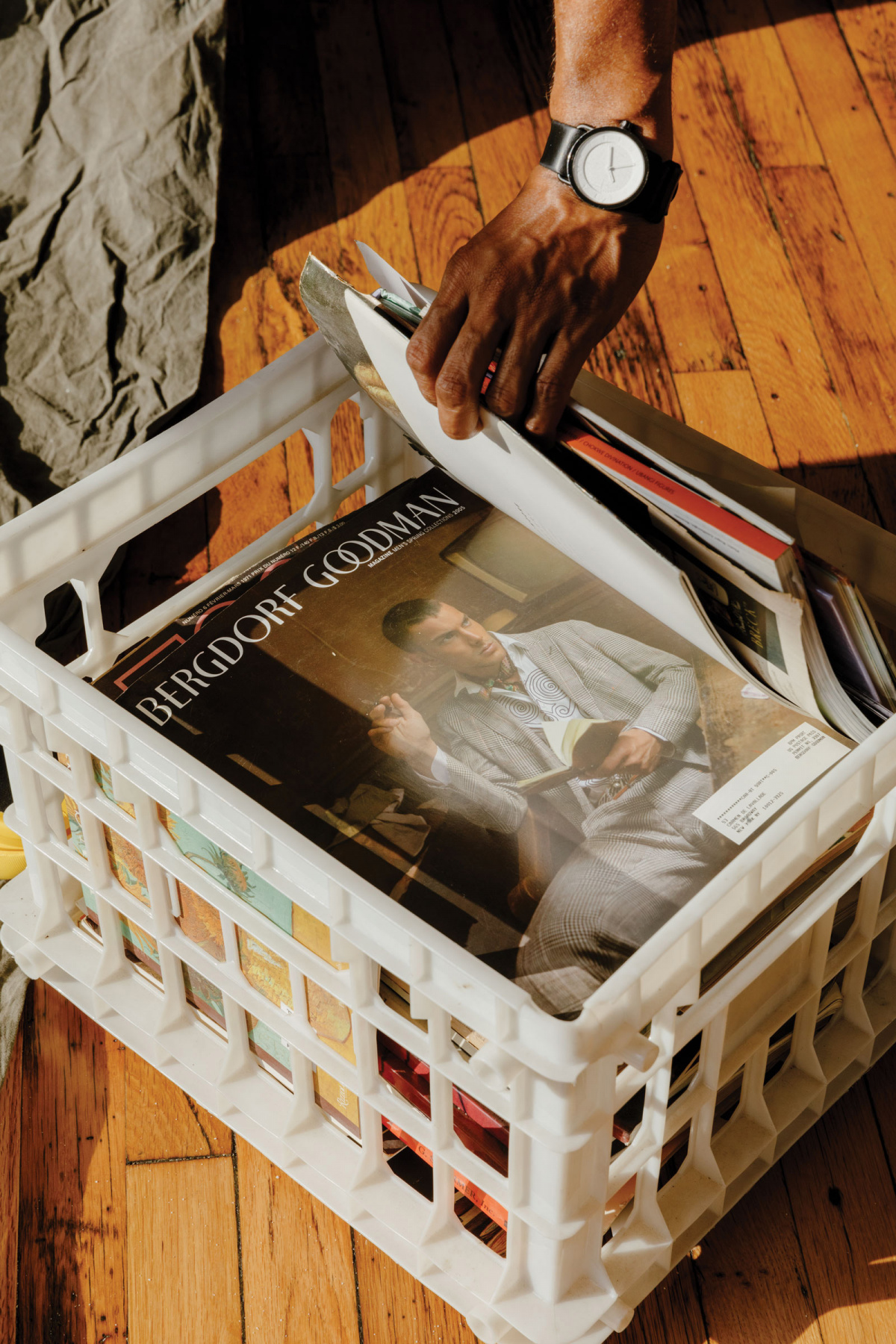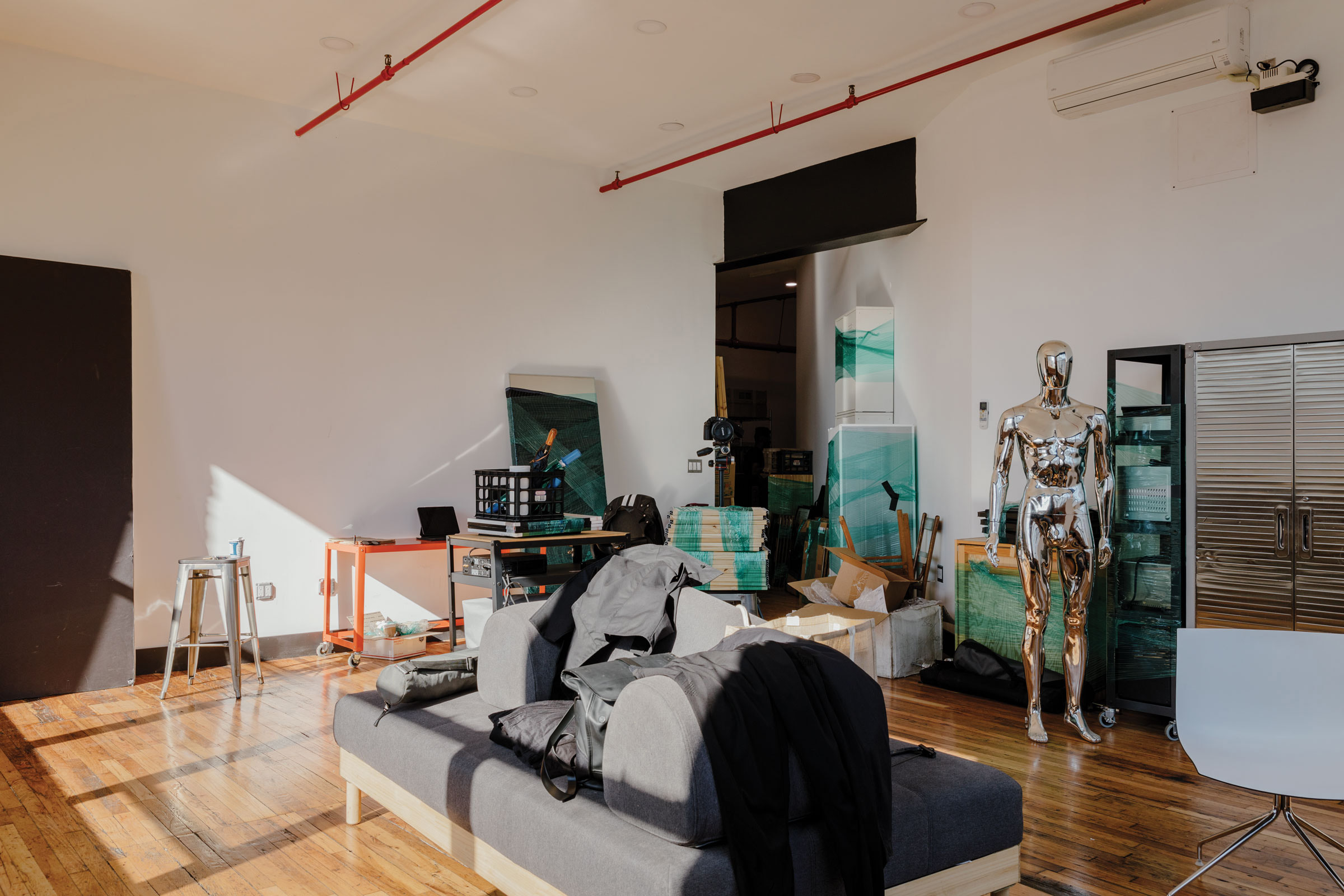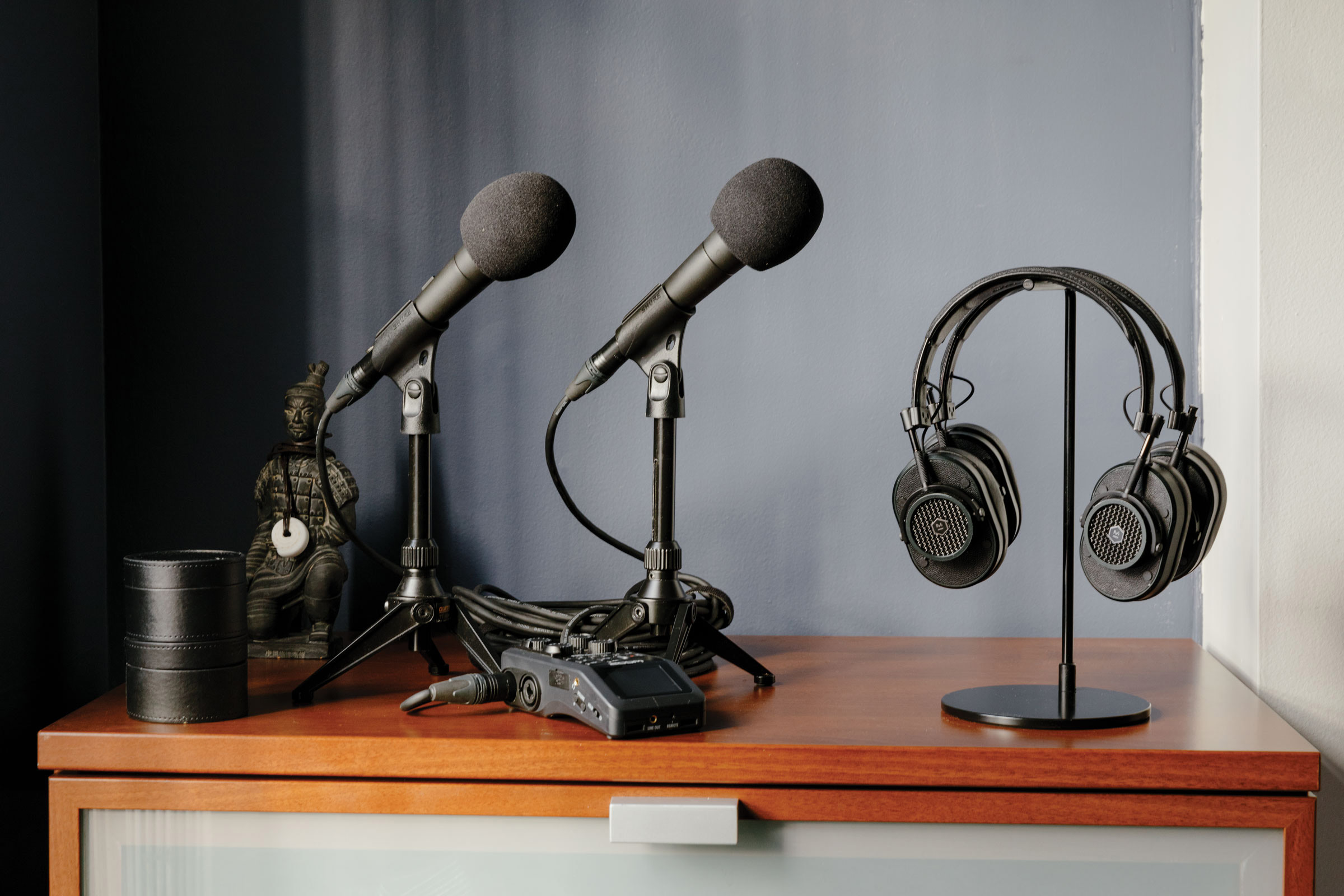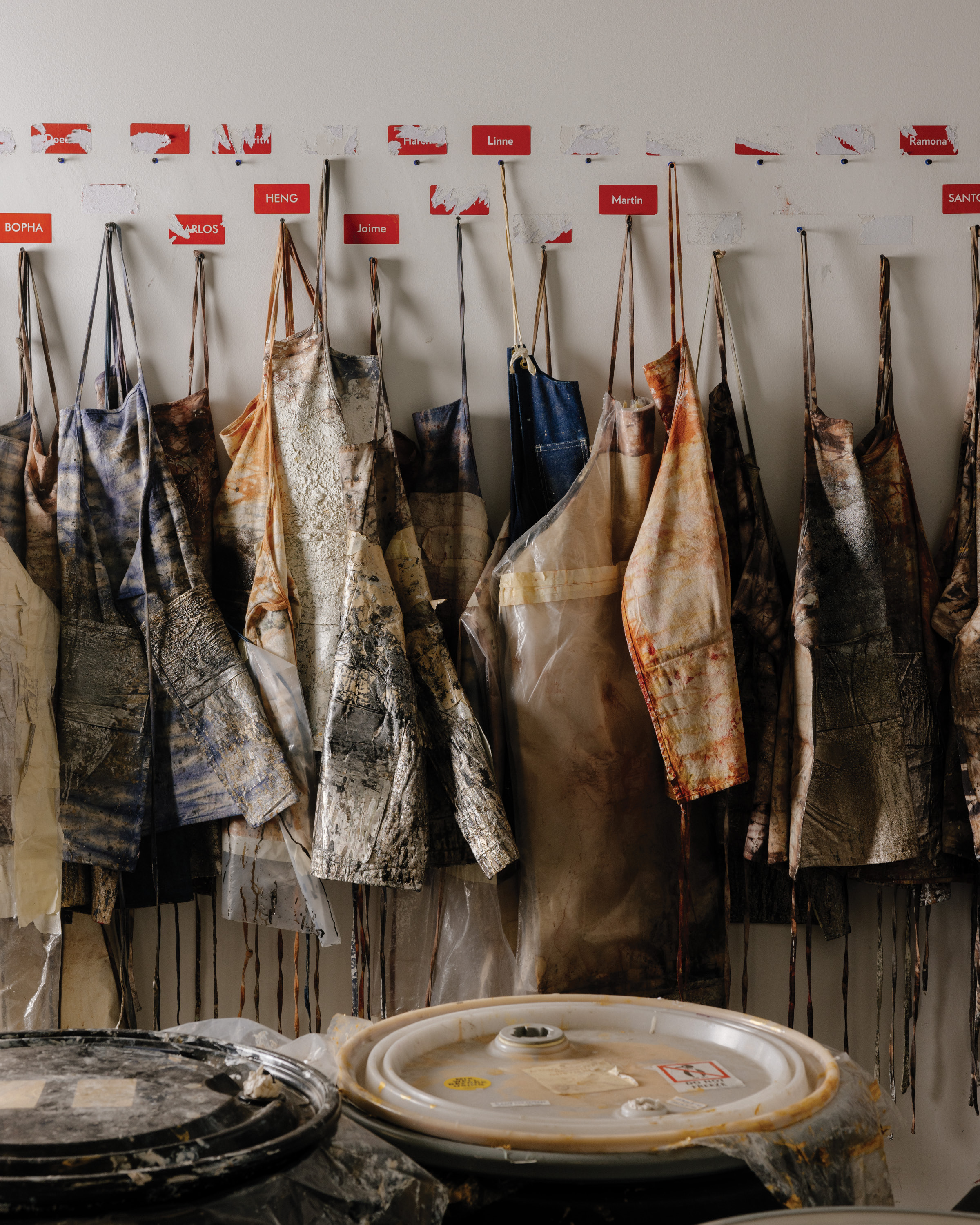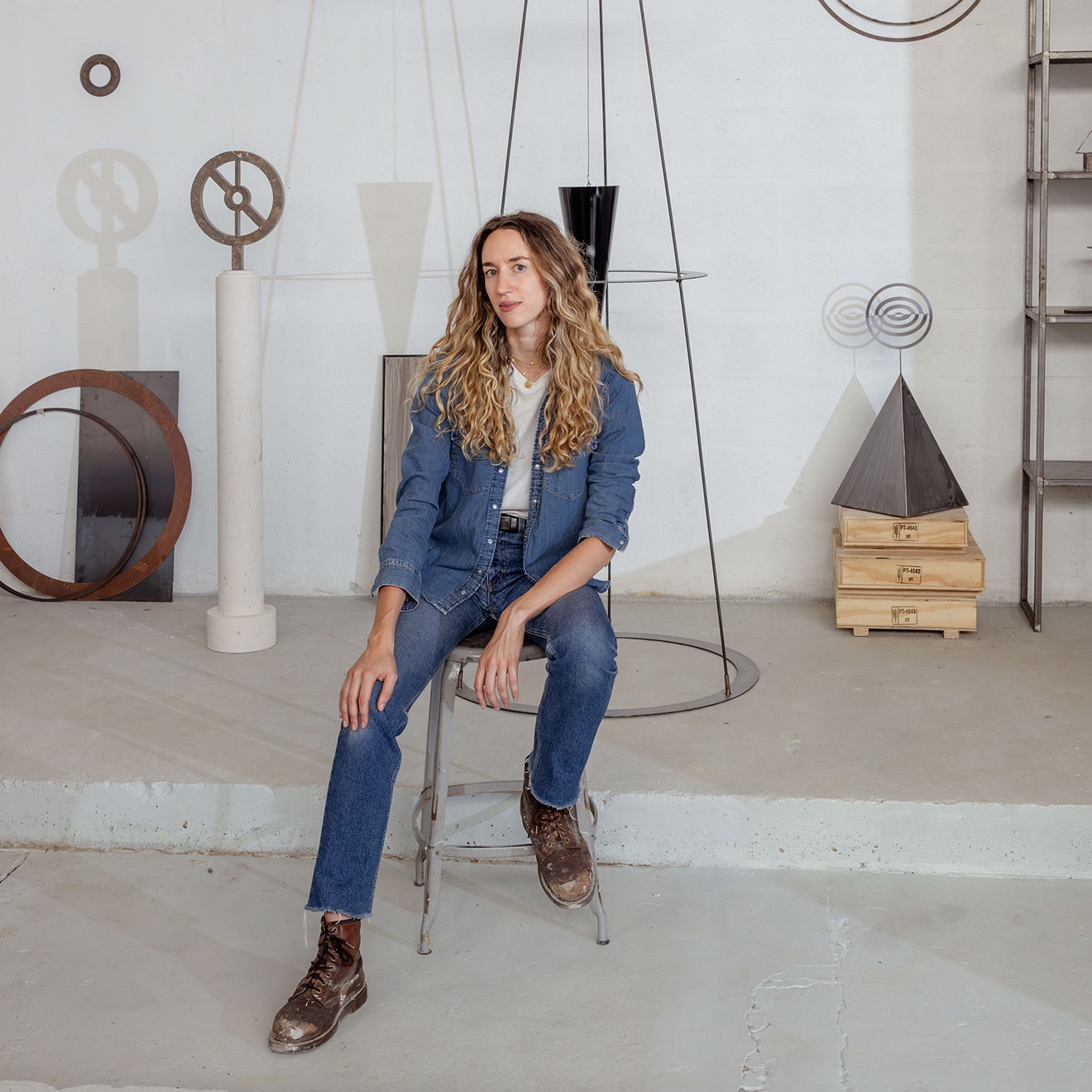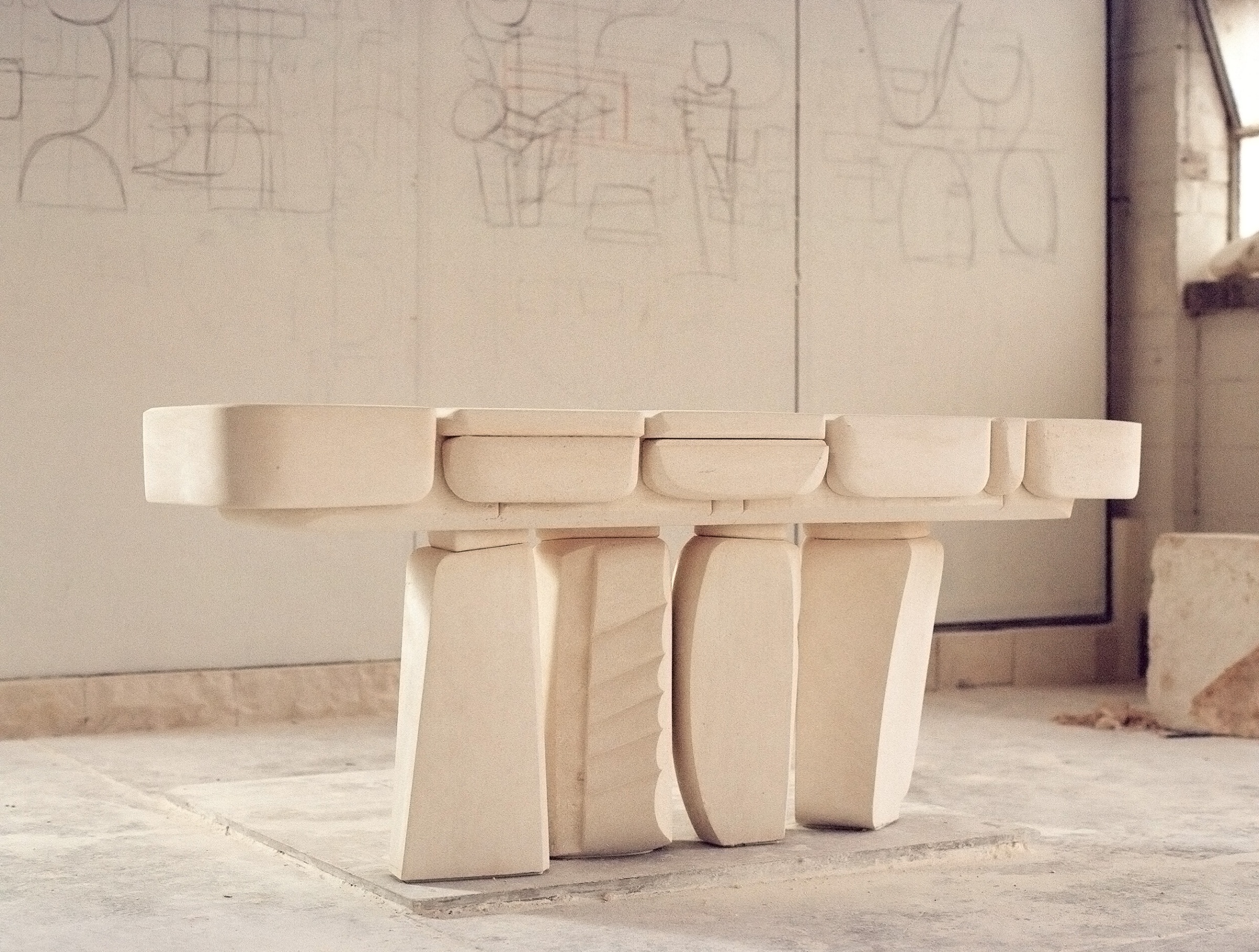“If there’s an abundance of something, share it.” That seems to be the guiding ethos of Dario Calmese—artist, photographer, sculptor, writer, and podcast host, to name a few of his roles.
Dario is working on bringing some big plans to life when I talk to him from his cluttered studio—he’s in the process of moving down the street to an essentially renovated version of his current workspace—in an industrial area near 136th Street and Walnut Avenue.
Most days Dario bikes to his studio, a block from the East River in the Bronx, from his home in West Harlem. It’s at most a 15-minute trip to this day labor area where he says no one’s trying to impress anyone, and he’s grateful. He’s been here six years; before he shared a studio with friends in Williamsburg, but that didn’t last long.
“They kicked everyone out four months in and made the studios into condos.” Being in the Bronx is much better, he says. “To be honest, without that studio I probably would have left New York a long time ago. I could really be anywhere in the world, but that kept me in the city because I had a respite. I had a place to call my own where I wasn’t being bothered.”
- Dario Calmese rides his bike to his studio in the Bronx from his home in West Harlem every day. “It’s a 10- or 15-minute bike ride from West Harlem. If your studio is super far you’re not going to go,” he says. Photo by Max Burkhalter
When I speak with Dario he’s full of energy, even after packing up countless boxes and giving a tour to Max Burkhalter, the photographer for Sixtysix. As they talk it seems as if he’s known Max for years. He shares little asides about his day and launches into genuine bouts of laughter.
Dario has become most known recently as the first Black photographer to shoot the cover of Vanity Fair, photographing Viola Davis for the July/August 2020 issue. He’s worked for Vanity Fair in the past, as well as The New York Times and Beyoncé, and while he hardly defines himself as solely a photographer, he pauses on this day to turn the lens on Max, even if just for an Instax.
“On my dining room table-slash-desk are all these Polaroids from shoots I’ve done. I always take two so people can take one.” He sets a timer so he and Max can snap one together, and now that photo joins Viola Davis and Spike Lee among others scattered across the table.
- Dario Calmese snaps instant images of everyone he works with. Photo by Max Burkhalter
While he still shoots clients in the studio on occasion, the space has become more of an office and library lately. He goes there to read, answer emails, record and edit his podcast, take calls, and make video content, among other tasks on any day. It’s where his idea for The Institute of Black Imagination, now a podcast and set to be a physical space in 2022, was born.
The idea comes from Dario’s immense book collection, nearly 2,000 bequeathed to him from the late Geoffrey Holder—the famous Black actor, dancer, musician, and artist he befriended. Titles are displayed on bookshelves organized by subject, from art monographs to dance to mythology. Some of his favorites are Les diners de Gala, the Salvador Dali Cookbook, for its pure absurdity, Nomads of Niger, and multiple books on set design. “The purpose is to give other Black and brown creatives access to these books,” Dario says of The Institute of Black Imagination.
Dario plans for the institute to grow into art activations, panel discussions, and a design lab for high school students that’s based loosely on Bauhaus and Alexey Brodovitch’s Design Laboratory. “Again, it’s access to this information to ignite their own imagination,” he says. “These children will be designing the world they and people after them live in, and this is making sure they have the tools they need to do that.”
- In 2013 Dario Calmese became the casting director for Kerby Jean- Raymond’s Pyer Moss fashion shows, soon going on to become the director. In 2019 he directed the Pyer Moss show at Kings Theatre in Brooklyn. Photo by Max Burkhalter
- Dario has become most known recently as the first Black photographer to shoot the cover of ‘Vanity Fair.’ Photo by Max Burkhalter
I ask Dario what it is about giving—he offers everything from an American flag (he doesn’t necessarily need it and he’s moving, he says) to a box of incense (he ordered so many after all) to our photographer—that motivates him.
On the one hand, life has been good to him, and he wants to share, he says. On the other, he’s compelled to be part of a world where Black and brown youth see themselves and a world of possibility. That starts with sharing knowledge. “This really comes from me not seeing myself. I grew up in a predominantly white neighborhood, and I had the most American upbringing, meaning I’m from the Midwest; there were 2,500 people at my high school; we had color guard and theater and football,” he says. “I was also told Manifest Destiny was a good thing.”
After high school he realized there was more to the world than American and European history. “Imagine my chagrin when I get to college, and we’re talking about the Hagia Sophia in Istanbul (the largest Christian church of the eastern Roman Empire). I was like, ‘How am I just learning this place even exists?’ And I was a good student.” He started questioning everything he’d been told about himself, his own sexuality, what it meant to believe in God, even music and art. “My father was a pastor,” he pauses.
Dario’s a classically trained singer and actor, and he’s been playing piano since he was 10. He grew up in the St. Louis suburbs and, after college (he got his master’s in photography from the School of Visual Arts and his bachelor’s in psychology at Rockhurst University in Kansas City) he moved to New York City, where he’s been for 16 years.
- Dario Calmese loves asking questions and learning about people and the world, and he spends a lot of time studying history and collecting books. “I have a ton of books here at my apartment. I just finished reading Carl Jung’s ‘Answer to Job.’” Photo by Max Burkhalter
- On any typical day Dario spends the first four hours meditating, reading, and writing before going for a run. Photo by Max Burkhalter
In New York Dario discovered the writings of Zora Neale Hurston and music of Donny Hathaway. “We didn’t listen to secular music growing up. Outside of gospel music all I knew was Anita Baker and Stevie Wonder, two great ones, but there was this whole other world. The only way I understood myself as a Black person, what I saw of myself reflected on television was not who I was. My own curious, artsy, weird, creative self—I wasn’t finding myself,” he says. “All of this is about making sure other young people don’t have to work so hard to find themselves.”
He met Geoffrey and Geoffrey’s family, who bequeathed to him the book collection that would ultimately set the course for The Institute of Black Imagination, the way he’s met so many others—through building relationships. “I met Geoffrey through his wife, Carmen De Lavallade, for whom I choreographed two dance pieces—one for Symphony Space in NYC, and the other for the Detroit Institute of Art,” Dario says. Rarely does he cold call or pitch anything. “A lot of my work and how I move through the world is filling in voids.”
His relationship with fashion label Pyer Moss founder Kerby Jean-Raymond was sparked from an exchange on Instagram. Little did he know he’d soon be directing shows for the brand—shows that have been hailed in Vogue and The New York Times as the “best show of Fashion Month.”
- Dario Calmese loves his studio in the Bronx. “To be honest, without that studio I probably would have left New York a long time ago. I could really be anywhere in the world, but that kept me in the city because I had a respite. I had a place to call my own where I wasn’t being bothered.” Photo by Max Burkhalter
“I met Kerby because his PR agent at the time was the same PR agent that Public School (another brand I worked with) had. I saw her post the clothes of this designer and I liked the clothes.” He sent a message to ask if he could stop by the showroom to check them out. She suggested setting up a meeting with Kerby and, six months after Dario met Kerby for the first time, Kerby asked him to cast a show. It was part of what Dario was already doing at Public School, and he leapt at the opportunity. After a few seasons Kerby wanted to do a runway show. “Runway shows are a different beast. There’s choreography, there’s actual order that has to take place,” Dario says. “It was a very small team, but I have a background in performance.”
As he’s done now many times, Dario took charge. “I started saying, ‘No, no. This is the order we need to go in; this is the pace,’ and I started directing the show, filling in this gap.”
The next year Kerby wanted to go even bigger, with opera singers doing rap. Dario was onboard, but he pushed the envelope further. “Kerby doesn’t know I have this background in playing music, singing, and directing,” he laughs. “He gives me the budget and the next thing you know he has a chorus of 16 people and a five-piece string quartet performing live. He’s in rehearsal and his mouth is on the floor.”
That was Pyer Moss’ 2016 show “Double Bind,” critically acclaimed for its messages that go beyond fashion to address everything from depression to Black Lives Matter. In Dario’s own writings he says, “The Black experience in America is the ultimate Double Bind; it’s a place where natural born citizens—promised life, liberty, and property—live an immigrant experience in the only land they’ve known as home. A place where Black culture is praised, commodified, and appropriated, while Black peoples are marginalized and serve as scapegoats for the ills of American society. … And we can’t escape. And we can’t talk about it.”
But Dario is talking about it, and he’s not about to stop now. From starting the podcast and planning a physical space for young people as part of The Institute of Black Imagination to his own research, he’s looking for ways to bring people in.
- These days Dario Calmese is spending more time on The Institute of Black Imagination, an idea that’s morphed into a podcast since starting in May 2019, one year before the height of the Black Lives Matter movement and conversations about the radical Black imagination. Photo by Max Burkhalter
One book he read recently, Paulo Freire’s Pedagogy of the Oppressed, continues to inspire him. “In it he states that the burden of liberation is on the oppressed, not the oppressor, because only with the strength built by being oppressed do you have the power to liberate everyone,” Dario says. “These moments we’re in now, many people have realized these systems we inherited, we may not be directly responsible for them, but we all inherited these old systems, these old ideas and designs that made the world operate in a very specific way, and recently we’ve seen it’s not working.”
Right now Dario is finishing his grant application for The Institute of Black Imagination. He expects to get his needed $300,000, even if it takes a year-and-a-half. But he isn’t going to sit around until then. “I don’t want to wait for permission to get this idea started, so that’s where the podcast came in.”
Dario emphasizes that the work is not about him. “The cover with Viola, while wonderful, has nothing to do with me. But what it shows me is how primed people are across borders, across races, across countries for that conversation. Which tells you people aren’t stupid. So why do we treat them as such?”
He says the big work for The Institute of Black Imagination will start in 2021, beginning with the website and finishing in 2022 with a physical space. “That’s the real work,” he says. “The cover with Viola and all that stuff is exciting and I’m exceedingly grateful, but for me all of that funnels into this work.”
A version of this article originally appeared in Sixtysix Issue 05 with the headline “The Philosophy of Giving Back.” Subscribe today.
